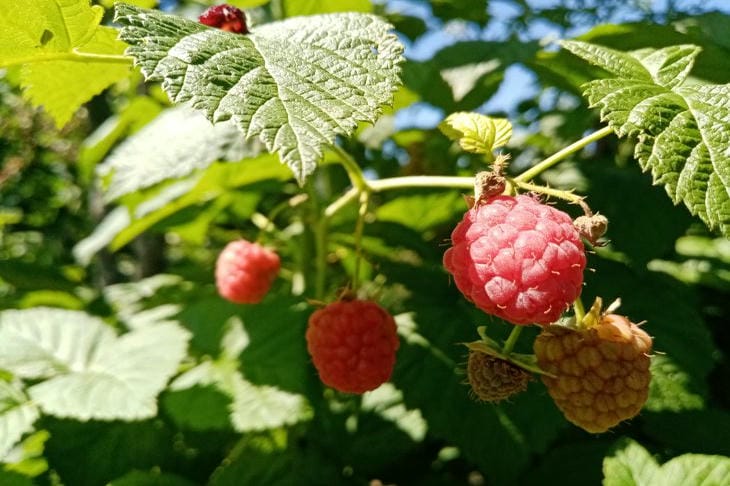What to do with raspberries after fruiting: secrets of successful care
When summer comes to an end and the last raspberries are picked, gardeners are faced with the question: what to do with the raspberries after fruiting?
Proper care of the bushes during this period plays a key role for the future harvest.
Failure to follow certain important procedures can result in decreased plant productivity and increased susceptibility to disease.
You need to know what steps need to be taken to ensure that raspberries provide a generous harvest every season.
Pruning old shoots
After fruiting, it is important to prune the raspberries. The shoots that produced the harvest will no longer bear fruit and will only take up space, interfering with the development of young shoots.

They should be removed to the very base. This procedure not only frees up space for new shoots, but also improves air circulation in the bushes, reducing the risk of diseases.
Top dressing and fertilization
To keep raspberries healthy, you need to provide them with nutrients.
In autumn, it is recommended to add organic fertilizers, such as humus or compost. This will help the roots accumulate the necessary elements for wintering and active growth in the spring.
Nitrogen fertilizers should not be used in the fall, as they stimulate the growth of green mass, which can weaken the plants before winter.
Watering and mulching
Watering after fruiting is also very important. Even though active growth is over, the roots continue to need water.
Regular watering helps plants accumulate strength for the next season. After watering, it is recommended to mulch the soil around the bushes.
Mulch, such as straw or sawdust, retains moisture and protects roots from freezing during cold weather.
Disease and pest control
The period after fruiting is the ideal time for preventive treatment of raspberries against diseases and pests.
Regular inspection of bushes allows you to detect and eliminate problems in time. The use of biological or chemical preparations will help protect plants from winter pests and fungal diseases. It is important to follow the instructions for use of preparations and observe dosages.
Preparing for winter
Preparing raspberries for winter is an important stage of care. The shoots must be bent to the ground and secured.
This will protect them from severe frosts and help preserve the harvest for the next year. In regions with severe winters, you can additionally cover the bushes with spruce branches or special materials. This will create an additional layer of protection and prevent freezing.
Propagation and transplantation
Autumn is a great time to propagate raspberries. Young shoots that appear during the season can be used to create new bushes.
Reproduction is carried out by separating and transplanting young shoots to a new location. It is important to choose healthy and strong plants so that they take root well and produce a bountiful harvest next season.
Strengthening the root system
To ensure that raspberries produce a good harvest, it is necessary to pay attention to strengthening the root system.
In addition to regular watering and fertilizing, you can loosen the soil around the bushes. This will improve oxygen access to the roots and help them develop. It is important to monitor the condition of the roots and, if necessary, trim and process them.
